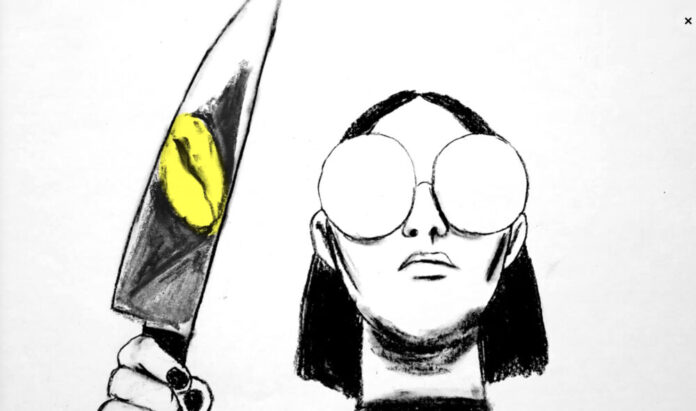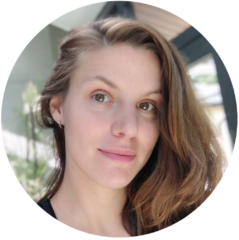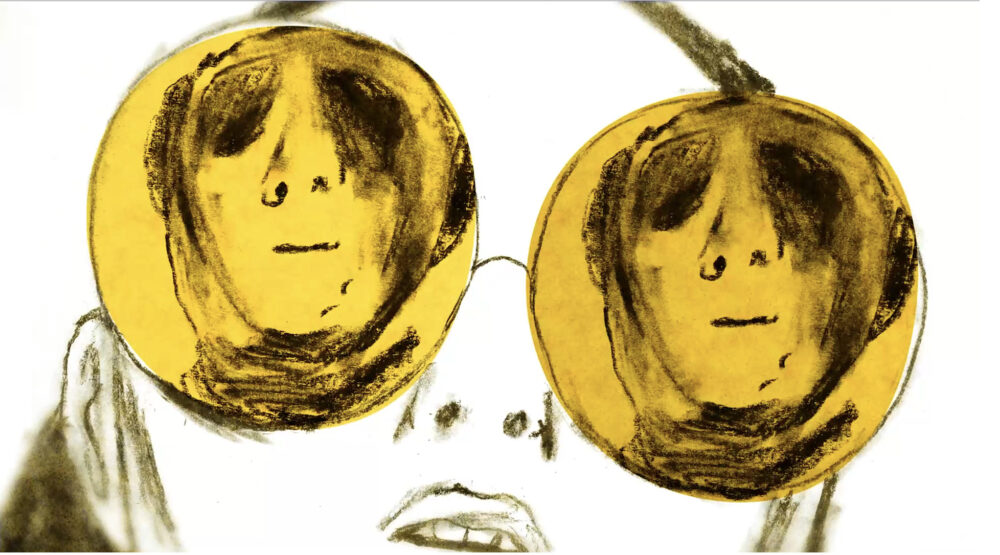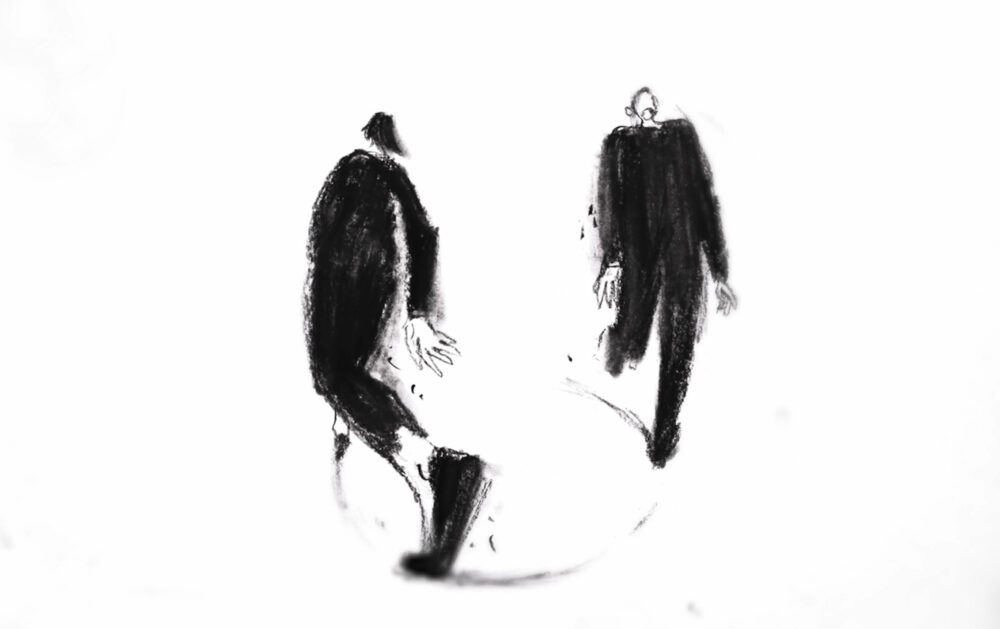Marta Magnuska’s animated short Misaligned finds parallels between the relationship between a man and a woman, and a gecko and several flies circling a lamp in their room. The short, which is produced by Polish company Animoon and co-produced by Atom Art (Latvia), has been receiving great word of mouth at festivals around the world and has qualified for Oscar consideration.
Magnuska was kind enough to answer a few of our questions about her short in an email interview:
Animation Magazine: Can you tell us a bit about the origins of the short?
Marta Magnuska: In 2019, shortly after graduation from the Film School in Łódź, I was contacted by two producers from the Polish animation studio Animoon — Piotr Szczepanowicz and Grzegorz Wacławek — asking if I would like to work with them on my debut short. I had a couple of very rough ideas in mind. I was not sure about the final shape of the film yet, but I wanted to experiment with less narrative, more visual ways of storytelling.
What was the inspiration?
The idea of the film is loosely inspired by a short story written by Italo Calvino, titled The Gecko’s Belly, that I had come across some years before. In the story, a couple follows a daily ritual of sitting by the window and watching a gecko hunt for flies. Watching the gecko devouring the flies triggers a stream of existential thoughts in their minds. I remember reading this short story for the first time and the vivid description of the thoughts of the protagonist who imagines he is a fly and is being eaten by the gecko. I immediately visualized it in my mind and I drew a couple of illustrations.
However, in the end the script of the film is not an adaptation of Calvino’s work by any means, the initial idea evolved numerous times. In its final version, the film focuses on the relationship between the woman and the man. The gecko remained in the story as a sort of catalyst of events — a magical element, an observe who is a silent ally of the woman who tries to reconnect with her partner.
Can you tell us about the artistic style of the short?
While creating the visual concept for the film, I was trying to figure out what form and look would work the best for this particular story. I was wondering what elements are essential for telling the story and relaying what I wanted to say. The minimalist form of Misaligned’s visuals aims to focus the viewer’s attention on the dynamics between the protagonists. That’s why I decided there was no need for complex scenography, and the fact that the situation is happening inside the flat is only marked with a couple of details.
I wanted to make a film using a traditional animation technique of drawing on paper. I enjoy drawing, and hand-drawn animation is the technique I feel most comfortable working with. With each new project, I try to learn and experience something new and I want to experiment with different animation techniques — and that’s why I decided to use frame by frame charcoal drawing on paper for Misaligned.
It’s a time-consuming technique, but I feel it adds a lot of expression to the drawings because of all sorts of imperfections, mistakes and dirt that appear while working, often giving unexpected results. I enjoy playing with textures, organic hand drawn lines of different expressions that serve to depict the dynamics and tension between the protagonists in a non-narrative way.
How long did it take to make and what was your ballpark budget?
The whole process of creating the film since the initial idea took almost three years (including breaks) It took me many weeks and many versions to decide about the final shape of the animatic before we were able to continue with the production stage. I don’t remember the exact numbers but the funding we got was around around 25,000 euros.
Where was the animation produced?
The main producer is Animoon studio based in Warsaw, Poland. The coproducer studio Atom Art is based in Riga, Latvia.
What was your biggest challenge?
I remember that the concept phase and the stage of creating the animatic took many months and was very challenging for me. I was curious to experiment with different ways of telling the story than with the traditional narrative. The initial idea changed significantly compared to the final version of the film — the concept of the film changed numerous times. It took many versions to get to the point where we were all happy about its final shape.
Another big challenge while working on the film was the work with the team of animators. In the case of my previous student shorts, I used to animated the whole film on my own, so it was a new experience to share the work with other artists, explain to them my ideas, and introduce them to the way I work.
How many people worked on it?
We worked in a small team: I was the director, scriptwriter and the author of the visual concept as well as the main animator. First I was working alone on the concept of the film and on the animatic while I was often discussing the progress and sharing the ideas with the team of producers from Animoon studio. Piotr Szczepanowicz, Grzegorz Wacławek, Karolina Barciszewska and Zosia Jaroszuk, who offered production and organization support, also offered lots of valuable creative feedback.
At the stage of working on the animatic, I started working with the editor Ewa Golis. She helped me to organize the structure and define the rhythm of the whole short. After a long stage of creating the animatic, I started working on the animation, and at one point two animators, Martins Dumins and Kristine Zvirbule from our Latvian co-production studio Atom Art, joined the team. Michał Fojcik was our sound designer: He helped me to define the initial idea that I had in mind and created a very intense sound design.
What would you like audiences to take away from this short?
The short is kind of an observation, I wanted to keep its structure open. I find it interesting that viewers are able to reflect on themselves and their own experiences in the project and often their impressions are going beyond what I was thinking about while creating it. Most people saw in it aspects of previous or current relationships, the short touches on issues that many people can relate to — loneliness in a relationship, the impact of routine on a couple and falling out of love.
What was the biggest lesson you learned from the experience of making this short?
One of the most interesting experiences while working on Misaligned was to realize that the short also reflects certain aspects of my personal life. I find it quite curious how circumstances seemingly unrelated to the filmmaking process can influence it so much. New ideas and interpretations kept on appearing as I was working on the project — often surprisingly and unconsciously parallel to my own life. It’s quite obvious, but it was interesting for me to realize how therapeutic the process of filmmaking can be!
For more information, visit misalignedshort.com.
You can watch the short below:
You can also check out out an interview with Marta below:








 Win a Funko X Lilo & Stitch Prize Pack!
Win a Funko X Lilo & Stitch Prize Pack! 
